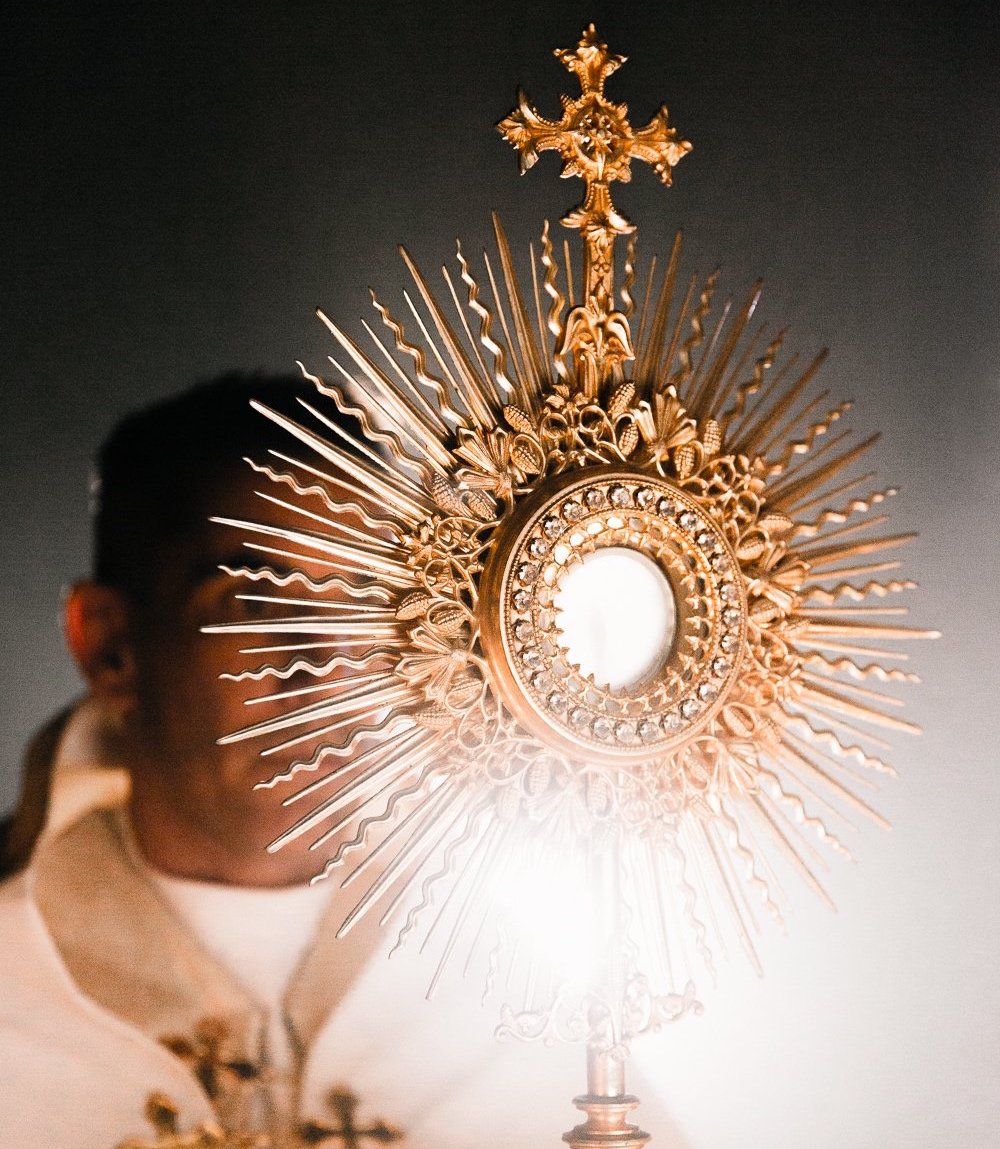New Year’s Resolutions for the Eucharistic Revival
“I am the living bread that came down from heaven; whoever eats this bread will live forever; and the bread that I will give is my flesh for the life of the world” (John 6:51).
It’s been nearly two years since the National Eucharistic Revival was launched in the U.S. in June of 2022. The Eucharistic Revival is an effort by the American bishops to increase Catholics’ understanding of what the Eucharist “really means,” as only 30% of U.S. Catholics believe that the Eucharist is the real presence of Christ. According to the movement’s website, its goal is “to restore understanding and devotion to” the Eucharist in this time of immense darkness and hurt.
So far, many Eucharistic processions have been held, and parishes have been invited to partake in the movement through events, outreach, and Adoration. The largest Eucharistic procession in history is planned for May through July of 2024, when the nation’s faithful will carry our Lord over 6,500 miles. The culmination of the pilgrimage is Indianapolis, Indiana, where the 10th National Eucharist Congress is scheduled to take place. It’s the first Congress in 83 years and is an opportunity for parishes and individuals to consecrate themselves to the summit of our faith.
This is exciting for the Church, and yet, as someone who is overwhelmingly busy with an infant and other life obligations, it’s hard to picture where I fit into this massive movement. It’s highly unlikely that I can join the pilgrimage with a one-year-old. Tickets for the Congress may be out of the budget this year. My husband and I always have grand plans to go to Adoration but have consistently failed in our efforts to make it. How can I partake in this movement?
Eating Better by Consuming Christ Better
Imagine seeing Christ walk by you on the street. Your first reaction—if not fainting or weeping—would probably be to kneel in the presence of our Savior. Although I may feel removed from the Eucharistic Revival, the Eucharist is readily available and accessible to me at every Mass. One way to revive my devotion to the Eucharist is to accept our Lord on the tongue and/or while kneeling.
My husband and I often joke about how awkward it is to receive on the tongue. Thoughts like “Is my tongue out far enough?” and “The priest is definitely grossed out by me” often cross our minds. If you feel comfortable and if your parish supports it, consider consuming by bowing (kneeling) in His presence and accepting Him directly into your body without touching it. This simple physical ritual may stir something in your heart and connect you to the Revival in ways you cannot foresee.
A Mental Revival
In addition to the physical change of receiving the Eucharist on the tongue and perhaps even kneeling, learning more about the Eucharist and the miracles associated with it is another way to connect to the Revival. The Catechism of the Catholic Church outlines the importance of the Eucharist to the Catholic faith, and you can hear those passages on the following episodes of Father Mike Schmitz’s Catechism in a Year podcast:
Day 180: “The Source and Summit.”
Day 189: “Worship of the Eucharist.”
Day 190: “Receiving Holy Communion.”
Day 191: “The Eucharist Changes Us.”
Day 362: “Our Daily Bread.”
You may also consider using this resource created by Blessed Carlo Acutis that lists the Eucharistic miracles of the world. In this online museum, you will discover Catholic mystery and passion through inexplicable events related to the Eucharist, like a host bleeding (developing a visible red stain) after being dropped in Poland in 2008. You will also learn about saints and beatified men and women whose lives reflect the salvation that is possible through Eucharist. For example, Teresa Neumann subsisted primarily on the bread of life for 36 years before her death, revealing that “through the Holy Eucharist, physical life can actually be preserved.”
If nothing else, you could even spend a few minutes scrolling through Instagram to connect with the Eucharist. Jeffrey Bruno’s account is a personal favorite whose photographs of Eucharistic processions through the streets of New York have brought me to tears.
Our Daily Bread
The Catechism quotes St. Augustine’s Sermon 57:
The Eucharist is our daily bread. The power belonging to this divine food makes it a bond of union. Its effect is then understood as unity, so that, gathered into his Body and made members of him, we may become what we receive.
In other words, we are what we eat. The more that we consume Christ in earnest, the more we will become like Him. If our wish is to make it to Heaven, then we need divine sustenance during our earthly pilgrimage.
The Eucharistic Revival may seem like an abstract movement, taking place hundreds of miles away, that has no practical application in my busy life. But if the Eucharist, as the true body of Christ, is the summit of our faith, then the Revival is a wonderful reminder of this fact. With the beginning of a new year, I am renewing my resolve to Jesus by resolving myself to the Eucharist—and participating in the Revival in my own, small way.
The Revival will come to an end, and New Year’s resolutions often fail, but the Eucharist is forever.
Margo White lives in the Lehigh Valley of Pennsylvania with her husband, son, and two dogs. A lover of the elderly and healthcare, and inspired by St. Catherine of Siena's care of the sick, she works as Healthcare Coordinator for the senior population to help them age-in-place. Margo spends her free time reading, planning travel adventures, and learning new things - her new favorite is skeet shooting! She can be reached at margohwhite@gmail.com.


